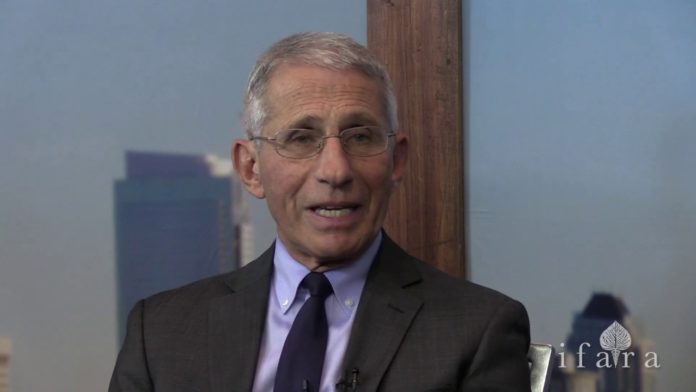
The global death toll of the novel coronavirus surged past 100,000 on Friday, though leaders in the United States, facing the world’s largest outbreak of the virus, said they saw new signs that social distancing measures were slowing its spread.
The American death toll is already daunting: more than 18,000 people, seemingly poised to pass Italy’s total and become the highest official toll in the world. And it is growing rapidly. More than 1,900 new U.S. deaths were announced Friday, the highest daily total so far. That number included a record-high 205 deaths in Michigan, where the coronavirus has been advancing even as it fades in the first American epicenters.
Still, officials said there was encouraging news. In New York, which has been hit the hardest by the virus, the death toll has been high but steady this week, staying just below 800 per day. That trend, plus a decline in severe cases, has encouraged leaders there.
But what comes next?
President Donald Trump has been privately pushing to lift some restrictions on business and movement. In a press briefing Friday, when Trump was asked what metrics he would use to determine when that step should be taken, he pointed to his head.
“The metrics right here,” he said.
But state leaders and infectious-disease experts say that to loosen restrictions safely – reviving the economy but not the virus – the United States must implement an ambitious system of testing individuals and tracing infection chains.
And the country is not ready to do that, they said.
So Friday, public health experts said the plan for now should be more of the same. The success of isolation measures in slowing the outbreak’s spread is a reason to continue them, they said, not to end them.
“We have not reached the peak,” said Deborah Birx, the White House’s coronavirus response director. “And so every day we need to continue to do what we did yesterday.”
Her exhortation came as the nation heads into an unprecedented Easter weekend. Most churches are conducting services online, but a handful are insisting on holding services on-site despite public health warnings.
Outside the United States, British Prime Minister Boris Johnson was said to be recovering, and even walking for short distances, after spending several days in intensive care this week. It was unclear when Johnson would return to run the government: He has appointed a deputy in his stead, as Britain faces a fast-rising death toll. Another 980 deaths were reported there Friday.
In Brazil, where President Jair Bolsonaro has mocked the virus as “a little flu” and flouted social distancing measures, the disease seems to be spreading rapidly. The Ministry of Health reported Friday a total of 1,057 deaths and 19,638 confirmed cases, Agence France-Presse reported.
In the United States, Friday was a day of death at the end of an unprecedented week of it. This week alone, U.S. authorities have announced more than 8,800 deaths from the virus – a toll greater than in the wars in Afghanistan and Iraq combined.
And that is probably an undercount, because the figure does not include anyone who died of the virus at home without going to the hospital or getting a test.
“It’s beyond my capacity to fully appreciate, to tell you the truth,” said New York Gov. Andrew Cuomo, a Democrat, as he announced 777 more deaths Friday in his state.
As the week went on, it became clear that African-Americans and Hispanic-Americans have died at disproportionate rates – far higher than their share of the population and higher than their share of the infectedpopulation as well.
On Friday, Surgeon General Jerome Adams said the cause did not seem to be genetic differences. Instead, he said African-Americans and Hispanics were more likely to have underlying conditions such as asthma and high blood pressure and more likely to have jobs that could not be done from home.
“We do not think people of color are biologically or genetically predisposed to get covid-19,” he said during the daily briefing of the White House’s coronavirus task force, referencing the disease caused by the virus. “There is nothing inherently wrong with you. But they are socially predisposed to coronavirus exposure and to have a higher incidence of the very diseases that put you at risk for severe complications of coronavirus.”
Terrible as it is, epidemiologists consider the death toll a lagging indicator, because those dying now probably were infected weeks ago, before the nation moved indoors.
Looking at more current metrics, they said they were encouraged by what is not happening: No state has followed New York’s trajectory. In that state, more than 170,000 people have been infected and more than 7,800 have died.
“What actually was predicted to happen, happened,” said Anthony Fauci, the government’s top epidemiologist, in a White House news conference. “We’re starting to see the leveling off and the coming down.”
Fauci said, however, that this was a sign that lockdown measures should stay in place. “This is not the time to feel that . . . we need to be pulling back at all.”
Soon after, Trump followed Fauci to the microphone to talk about pulling back. He said he would announce Tuesday the members of a new task force made up of people from the medical and business communities to determine when and how to reopen the country.
“I call it the ‘opening our country task force’ or ‘opening our country council,’ ” Trump said. He added that he had not chosen a date for reopening businesses, but privately the president has sought a strategy for doing so May 1.
Trump himself can’t make that call; it would be up to governors, mayors and other officials to rescind specific restrictions. Still, his encouragement could lead to some re-openings in states where leaders are closely aligned with the president.
But scientists say it’s crucial that before that happens, officials conduct widespread testing for the virus and employ armies of “contact tracers” to identify who might be infected.
That way, authorities could isolate only the infected and exposed. For now, however, scientists say the United States has neither the testing nor the tracing capacity to make that work.
On Friday, Apple and Google announced a partnership that would allow people to install an app and self-identify as infected. The app would, in theory, then alert people who had been near the infected person, using location data from their cellphones.
But that program is voluntary to install and use, making it insufficient on its own.
“All people are talking about right now is hospital beds, ventilators, testing, testing, testing. Yes, those are important, but they are all reactive. You are dealing with the symptoms and not the virus itself,” said Tolbert Nyenswah, who led one of the most successful contact tracing efforts in Africa during the Ebola epidemic of 2014 to 2016. “You will never beat a virus like this one unless you get ahead of it. America must not just flatten the curve but get ahead of the curve.”
(c) 2020, The Washington Post · William Wan, Hannah Knowles, David A. Fahrenthold
{Matzav.com}












There is some very interesting information on here that you may not see elsewhere. Take a look if you want to learn some important things:
https://www.youtube.com/watch?v=5g4u1LJQ7_k&t=1053s
When the Deep State / Cabal / Mossad running the Health Departments and hospitals worldwide will be eradicated, aka coronavirused, the epidemic will stop. They should start with Dr. Farci and Demorah Birx.
Here’s proof:
https://www.youtube.com/watch?v=uGZ-DW5LVCs&feature=emb_logo
ICU Nurse Whistle blower: Covid19 is Manufactured Crisis